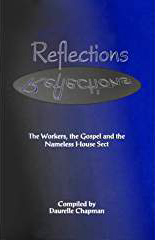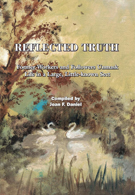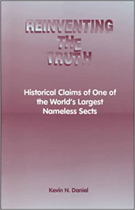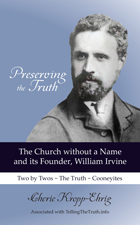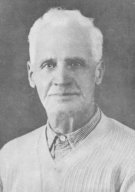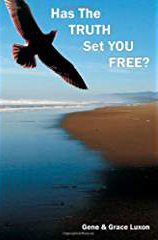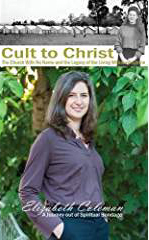Romania & Moldova
Moldova
The Republic of Moldova is a landlocked country in Eastern Europe, bordered by Romania to the west and Ukraine to the north, east and south. Upon the collapse of the Soviet Union in August 1991, this republic declared its independence and took the name Moldova with Chișinău as its capital city. It became a member of the United Nations in 1992.
Moldova is attached to the work in Romania; they share a common language. There is one Moldovan sister (Virginia) in the work in Romania. John Johnston (from Ireland) was Overseer in Romania and Moldova. Currently Viorel Carcu with an Irish co-worker are the only active brother workers in Romania and Moldova.
Romania
From Wikipedia: Communist Romania was the period in Romanian history (1947–1989) when that country was a Soviet-aligned communist state in the Eastern Bloc, with the leading role of Romanian Communist Party enshrined in its successive constitutions. Officially, the country was called the Romanian People's Republic from 1947 to 1965, and the Socialist Republic of Romania from 1965 to 1989. The communist government fell in December 1989.
See also Wikipedia:Nicolae Ceauşescu, Romanian Communist Dictator. Ceauşescu's government was overthrown in a December 1989 revolution, and he and his wife were executed, following a televised and hastily organized two-hour court session.
When did the workers first arrive in Romania? In 1964, Richard Davis was the very first known worker to enter the country. He went to Romania from Holland on a tourist visa and visited a few cities. During his first tour, he learned there were German-speaking churches in Sibiu. Roy Price also (from NZ, laboring in Austria/Germany) visited Romania on his way to Turkey. Maria Hartig and Ruth Christian (from Australia) arrived in1965. They met a young Romanian Christian at the Hotel in Sibiu, and upon their return, they stayed in the homes of Romanians making contact first with several German- speaking citizens, such as the Hatzack family.
Who were the first brother workers? Some of the early ones who arrived in 1968 were Richard Davis (from Iowa; deceased Sep 2007) and Jim Wood (from California; deceased). Many consider Richard Davis their "Father in the gospel." John and Maria Hartig (siblings) were also among the early workers there. Richard Davis was the first to apply for a student visa around 1971 or 1972, followed a year later by Loren Skaw (from Iowa).
Who were the first sister workers? Ruth Christian (Australia) and Maria Hartig (Colorado US; born in Romania); both had been laboring in Austria.
Who was the first to profess? George Bocancea (deceased), Heinz Hatzack and his mother (deceased) and later his sister Helga Hatzack in Sibiu. A few years later the Hatzack family immigrated to Germany.
Who was the first native to go in the work? Two Bocancea siblings and their cousin Vergi Handaric were the first to offer for the work and actively traveled helping the foreign student- workers during the Communist regime. Later, two younger Bocancea siblings and Bianka Sturm offered. After 1989 revolution, Titi Bocancea, Viorel Carcu and Vergi Handaric were the first Romanians able to give up their jobs and become "unemployed" full-time workers. Bianka Strum´s family immigrated to Germany where she started in the work in 1991. Only Viorel Carcu is still active in the work.
When & Where was the first meeting? At the Bocancea's home in Sibiu. The first workers claimed to find "professing" people in Romania, as the Bocancea family had previously stopped going to church and held a small meeting in their apartment. Under Ceausescu's regime, they weren't allowed to have formal meetings. They gathered as a family in their apartment or outdoors outside the city limits. Helga Hatzack returned several times for visits. Years later after others started showing interest, they would visit with other families and friends in the woods, by a river or visit each other and have fellowship that way. The vast majority of new friends were brought into fellowship by relatives or friends from established Christian churches.
When & Where was the first baptism? Very secretly in 1969 near Sibiu.
When & Where was the first convention? In the summer of 1979, during a long hiking trip in the mountains, some impromptu "camp meetings" were organized by Bocancea family who were vacationing with some of their cousins, and a family friend (Viorel Carcu) and a visiting foreign worker. Next year, the first 4-day "camp" was held with two workers present. A baptism of four was very secretly performed by one of the workers, away from the camp, in a mountain river pool. After the 1989 revolution, an official convention place at Stupini near Brasov, was constructed on the property of one of the friends. Small groups of friends were assigned to attend each at the and 3-4 conventions.
Where is the convention currently held? Now that there is liberty to meet openly, they have two conventions in a rented facility at Gura Sadului near Sibiu on consecutive weeks, with less than a hundred attending each one.
Who have the Overseers been? During those early years, the workers were under the guidance of Bert Todhunter (from Scotland, laboring in Austria), though not listed on the Austrian list. The first actual overseer of Romania was self-appointed Glen Watkins (from Indiana). When Glen was removed from his overseership, he married, and John Johnston (from Ireland) became overseer.
The workers probably did not go to Romania before WW2. Workers began to go there in the late 1960s and early 1970s. The first workers were able to visit as tourists and to be hosted in the homes of Romanians. Around 1973, a new Romanian law restricted foreigners from being hosted by Romanian citizens (except first-grade relationships.)
From then on, some of the workers were able to register as students in the universities (Richard Davis' idea) and get permission to stay in the country. Some of the early ones who were admitted as students were Richard Davis (deceased), Loran Skaw (was in Poland) and Dan Sherick (was in Ukraine). These three were all from Iowa, US. There were also others from Ireland (Jean Robinson, Ruth Kevelighan and Janet Hogg). Jim Wood (from California) was in Romania for a brief period of time as a tourist visitor and also in Morocco, Austria and Turkey between 1968-71. The communist government fell in December 1989.
John and Maria Hartig (siblings) were also among the early workers there. The Hartigs were German settlers in Romania from several generations back. After WW2, many Germans were deported from Romania, even though they were people whose ancestors had left Germany several generations ago and settled in Romania. John and Maria were born in Romania, though they were always German-speaking, and not Romanian-speaking. The Hartig family ended up as refugees in Austria, where they first met workers and professed. Then they emigrated to Colorado, where they got in touch with workers. Both John and Maria started in the work in US, and then eventually returned to Europe where they labored for many years in Austria; both are now living in Colorado; Maria is married.
Maria Hartig was refused the application for a student visa, but she and her brother John were able to still visit Romania as tourists for a while. During one of the visits, Maria´s purse was stolen, and she was left without money and passport. A Romanian friend (illegally) hosted Maria and helped her to obtain the necessary papers to leave the country. After that she was not allowed to visit as often.
In the beginning when the workers first entered Romania, there very few (three men) who accepted the workers teachings. Around 1980, some younger folks were responsive, and gradually, several small churches were formed. A few young people offered for the work and/or accompanied workers—even before communism fell.
The foreign workers attended universities, year after year, in order to be allowed to live in Romania. Some deliberately stretched out their studies, getting their degree as slowly as possible so they wouldn't lose their student status and have to leave Romania. Some may have deliberately failed some classes so they would have to repeat them; some others steadfastly continued and earned advanced degrees in various fields.
The natives who offered for the work had to hold registered jobs. By the time communism fell (Dec. 1989), there was already a well-established group of friends and four foreign workers (Glen Watkins and Frank Renteria; Sharon Accola and Sharon Worden.) They even had several small "camps" (never called "conventions"), where up to 50 friends would go up to remote areas in the mountains on "camping trips" and hold a series of 3-4 days meetings, with 1–3 foreign workers present. The Secret Police began searching the campgrounds, harassing one of the workers to the point of making him leave the area and the country. After that, they had several years of much smaller camping meetings at different locations. After a while they felt comfortable using the same campsite per summer, with friends rotating in and out. Since the 1989 revolution, with the fall of Ceausescu's Communist regime, there has been liberty to meet openly. Currently, there are two small conventions on consecutive weeks in a rented facility near Sibiu, with less than hundred attending each.
During the Communist years, the foreign workers laboring in Romania were under the guidance of Bert Todhunter (from Scotland, laboring in Austria), though they weren't listed on the Austrian list. Glen Watkins (from Indiana, laboring in Italy) ordained himself as the first actual overseer of Romania. When Glen was removed as overseer, he left the work and married. John Johnston (from Ireland) became overseer.
When Glen Watkins became overseer, there were workers in Romania from US, Canada and Ireland, with most of the workers being natives. Quite a few native Romanians have gone in the work and some were sent to labor in various European countries, including Poland, Armenia, Albania, Bulgaria, Spain, U.K., Germany, Russia, Hungary, and perhaps others. One Romanian young man and a Romanian sister were in the work in the US for a few years.
Romania, and more recently Ukraine, were the areas of Europe that had the most continued growth in numbers of converts. When/After Glen Watkins was removed as overseer of Romania, the majority of the native brother workers were put out of or left the work or sent to foreign fields. Many foreign workers left the work in deep distress or left the country and joined the staffs in Ukraine or their home countries. Several Romanian friends left the country, and several left the fellowship.
TTT Editor's Note: The above information has been compiled by the TTT Editor from various sources. Corrections or additions are welcome; as well as other historical accounts for various countries Email TTT

 REPRESENTING THE LARGEST COLLECTION OF 2X2 HISTORICAL DOCUMENTS ON THE INTERNET
REPRESENTING THE LARGEST COLLECTION OF 2X2 HISTORICAL DOCUMENTS ON THE INTERNET
 Perry, Oklahoma Conv, 1942
Perry, Oklahoma Conv, 1942
